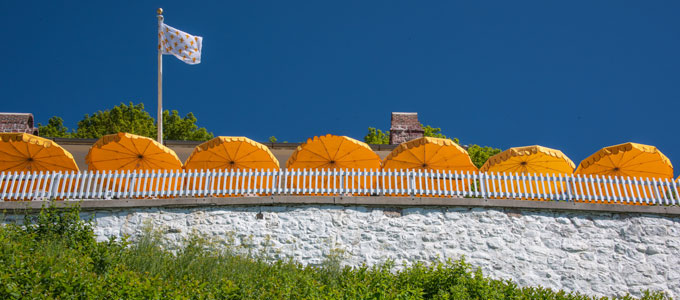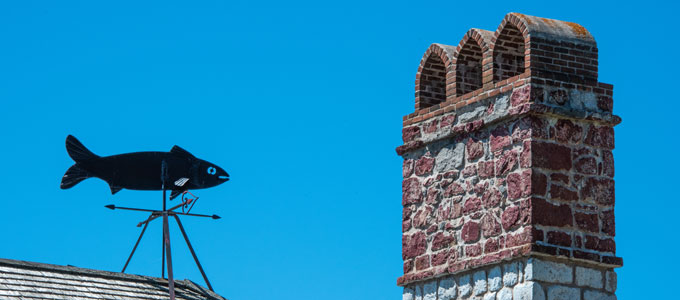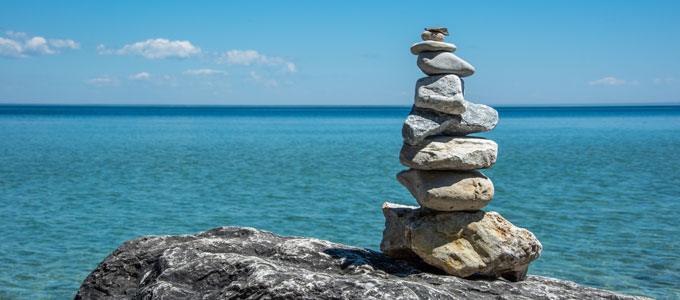|
A biweekly newsletter from the Anthroposophical Society in America
 |
|
September 12, 2021
Dear Members & Friends,
We have reminders and links at the end for the fall conference, Applied Anthroposophy Course, and APO Walkathon. If you haven’t engaged those already, please take a look.
You’ve also heard that Director of Programs Laura Scappaticci left her position at the end of May. The posting to fill that role is now online at anthroposophy.org; if you know someone who might be interested, do share the link!
This week’s verse from Rudolf Steiner’s Calendar of the Soul describes the summer transition into fall, and our photos, from Dwight Ebaugh, portray those bright impressions of our summery senses which now are laid into the memory’s treasure.
|
|
 |
|
9/10, 9/11, 9/12
The events of September 11, 2001, have reached their twentieth anniversary just after the formal endline of the American Afghan war. Last year we recalled Patrice Paz of the New York City branch, who died looking out for a colleague on a high floor of the World Trade Center.
9/11 was of course felt with a special intensity in New York City, where the horrifying and spectacular tragedy took place at “ground zero” in lower Manhattan. Against the powerful outward images, Lynn Jericho asked, “What went on in the individual human soul” around 9/11? Lynn was active in the New York Branch at the time, and responded over the following months by developing a series of conversations which she called Ground Zero & The Human Soul: The Search for The New Ordinary Life. Informed by anthroposophy, they “move the listener from the individual to the global, from the present to the future.” The six conversations are now online as twelve short (23-minute) podcasts, and Lynn suggests for those interested not just one but a series of four listenings: first, as “a salve for the pain of the past”; second, “as a moral challenge for the individual”; third, as “a new philosophy for a profoundly human future”; and fourth as “a dialogue for meaning in the 21st century.” The podcast title is “Wonderland: Where Wisdom Waits” and can be searched in any podcast app, or accessed here on Apple Podcasts; scroll down to the first episode.
“With 9/11...we saw a great deal of patriotism, this new celebration of being American. What we lost was perhaps that perspective of the whole world. I’d like to challenge people to go on a website and find a picture of the Earth in space. And pick out a part of that globe, that sphere, that wonderful image of blue and white, that you hate, that you don’t love, that you would like to cut out... I don’t feel there are too many individuals who don’t love the entire planet.”
My own recollection is that in the 25 days from 9/11 until the bombing of Afghanistan began on October 7th, many conversations in NYC went to “why people would commit suicide to hurt us,,,” But that reasonable question ceased abruptly when the bombing began.
Of course there is a huge “geostrategic” dimension to 9/11 and its aftermath. T.H. Meyer’s Reality, Truth, and Evil (2005, Temple Lodge) lays this date alongside “Pearl Harbor,” December 7, 1941. Certainly 9/11 was the end of the brief, hopeful moment that followed the Cold War’s end with the 1989 take-down of the Berlin Wall.
A larger and more positive picture from just before 9/11 lives in America’s Global Responsibility: Individuation, Initiation and Threefolding, by Yeshayahu (Jesaiah) Ben-Aharon. In this light, just after the 1998 “Battle of Seattle” stalled the completion of an economic world government through the WTO, 9/11 takes on the dual character of justifying global domination projects on the one hand, while also opening our hearts through the shared experience of suffering and loss.
The opened heart must also, like the opened mind, inform itself, as anthroposophy wishes to do. Ben-Aharon sums up in relation to the work of “civil society,” as cultural activist initiatives are often called:
“Civil society as an emergent global power is young, and though it has already achieved a few significant public victories, it is dangerously premature to believe that it has already found or consolidated its deeper roots in modern social existence. My opinion is that in order to make a deep and lasting impact on the global social situation at the beginning of the twenty-first century, it must ally itself in full consciousness with the main thrust of the evolution of human consciousness. The more it expands its external social and cultural engagements and responsibilities, the more it should intensify its inner-directed cultural-spiritual activities and integrate them with its social commitments.”
|
|
 |
|
SKETCHES, VIRTUES

You will have to be in the Santa Cruz, CA, vicinity this month to catch an exhibit of pen and ink drawings by the late art historian and anthroposophist Johannes Gaertner (at the R. Blitzer Gallery). Gaertner (1912–1996) was born in Berlin and settled in the United States in 1946. He was a well-known professor of art history, a much-admired poet, and a theologian. He is known today for Worldly Virtues, an elegant collection of reflections on the great classic virtues by which we may endeavor to live our lives. Johannes Gaertner’s philosophical musings shed fresh, contemporary light on oldworld virtues, from ‘sensitivity,’ ‘beauty,’ and ‘prudence’ to ‘compassion,’ ‘intellect,’ ‘tact,’ and the value of ‘absurdity.’
“How many qualities or virtues can man have? Well, we found 365 (a selection of which we offer here) and stopped looking for more. If at least that many can be named, can exist as concepts, then this gives rise to hope in a world that sees so much evil, misfortune, decay, and destruction.
“Optimism and cheerful hope are not entirely justified, but neither are pessimism and dark despair. Whether the good will ultimately prevail is uncertain, but we must act as if with our help it could and will. And though we have no contract, we must assume that Nature intended us to exist and to survive. God is, perhaps, on our side.”
— Johannes A. Gaertner, preface to Worldly Virtues
“This book was born in 1990 as a Christmas present for my father. Having found the manuscript among his papers, I thought my publishing it would be a fitting tribute as well as an ideal gift for his friends and admirers, many of them former students from his 40 years of teaching. My father was one of a dying breed: the European émigré humanist in whom vocation and avocation, learning for a living and living for learning, run in perfect, parallel harmony. Having begun his training as a theologian and linguist, my father segued into art history and aesthetics as time and tenure permitted. Along the way he taught everything from music appreciation to middle high German, from Latin to ethics. The diverse strands of his erudition and inclination have produced the observations which follow. As his daughter, I'd grown up surrounded with these ideas; they were as natural as the food on our table. Little did I dream, however, what a responsive chord they would strike in others.”
—from the introduction by Susanna Gaertner
A preview (scroll down for several examples: deliberateness, perseverence, sensitivity, reverence, virtue, frugality, kindliness, tact) is available at Google Books:
TACT— Implies the awareness of another person's feelings, the anticipation of his reactions, and the adroit removal or avoidance of psychological difficulties and social frictions. Tact is less a function of feeling then one of intelligence. If women are said to be more tactful than men, it is because they are more intelligent, particularly with regard to human relations. (Baby girls smile earlier than baby boys.) Tact requires what Rudolf Steiner called “moral fantasy.” One must be able not only to see but to feel the world as another might, thus not merely refraining from saying the wrong thing but sometimes actually not saying or doing the right thing. Tact is the courtesy of the heart.
|
|
 |
|
INNER FIRE
Beatrice Birch of the Inner Fire initiative in Vermont shared a link to a story by Amy Biancolli, published on the website Mad in America - Science, Psychiatry, and Social Justice. “Inner Fire: Where Seekers Have a Choice — A Vermont residential community program helps people taper or stay off medications with holistic care embedded in a pastoral setting.” The lengthy and experiential account begins with a group, guides and seekers, walking up a grassy hill, flowers, bees, sparrows, a lively brook... One seeker speaks of the journey:
As the afternoon unfolds, he addresses this more: Wanting to be better. Wanting to live, and not die. He talks about his years working as an OR nurse, his diagnosis of ADHD, the path that brought him to Inner Fire, and his efforts to grow as a human being. Before making the move to Brookline, seekers try out the program for a three-day visit to see if it fits with their needs, desires, and mindsets. What Ken saw during his visit last year stuck with him, following him to the streets. “Those three days,” he says. “I learned so much.”
In his first month at Inner Fire, he’s learned more. He works in the garden. He works at splitting wood. Recently, he says, it hit him: There are no straight lines in nature. There’s no point A to point B. It’s all tacking — this way, then that way, then that. “This is kind of like the closest thing I can find to a Zen monastery. . . . Beatrice, through her life, she was able to find the truth: What works,” he says. “And how to put it into place.”
Everyone’s on a journey, after all — the guides included. That’s all part of the Inner Fire experience, Birch says — for all of them. “We cannot ask a seeker to do anything that we’re not working on ourselves. You know, that’s just unethical, really. You can’t.”
As the website puts it, “Inner Fire is a proactive healing community offering a choice for adults to recover from debilitating and traumatic life challenges without the use of psychotropic medications.”
|
|
 |
|
IN BRIEF
Some events don't fit the posting requirements of our calendar, so here are a few links:
A new series of five MysTech Study Groups are starting this week of September 13th: beginners, intermediates, Refined Breathing, Light and Electricity, and the new Destiny of the Human Body. These courses can be taken in any sequence.
The Pfeiffer Center’s Year Long Training in Biodynamics covers the basic principles of biodynamic agriculture according to the seasons, in thirteen workshops. It starts September 18th in Chestnut Ridge, NY. — There are many other events at Threefold Educational Center, forty minutes drive north of Manhattan; take a look here.
Online courses with Laura Summer of Free Columbia are consistently well-received. Color, Composition, Contemplation will run for 10 months from October 8th. Color Dynamics also starts October 8th and runs for ten weeks. Contact Laura for information and to register. All course tuition is on a sliding scale.
If you've wondered what the MC Richards Program is like, experientially, the Free Columbia email also shared this picture:
As the days grow bit by bit shorter, and a coolness settles into the evenings and early mornings of Philmont, so too the second cohort of the MC Richards program is settling into its first weeks of class. What a beautiful time of year to make a beginning. Nathaniel Williams has been leading the cohort in Impressionism in the western and Japanese tradition. Working in charcoal we've worked to capture the essence in high falls, the rolling hills around Claverack, Olana and the Hudson River, Kaaterskill falls.
We met the afternoon warmth of the last weeks continuing to build the Giving Garden at Free Columbia house with Shawn Grider. For some it was the first time planting a seed. Dan McManus lead us in an introduction to biodynamic farming and put us to good works at Common Hands farm, and we began our first on farm initiative, building a biodynamic prep garden and barrel compost site. As always, thank you. Without your contributions and support this years growth wouldn't be possible.
Check the calendar for many new events this month, including eurythmy in person and online.
|
|
 |
|
|
|
|
|